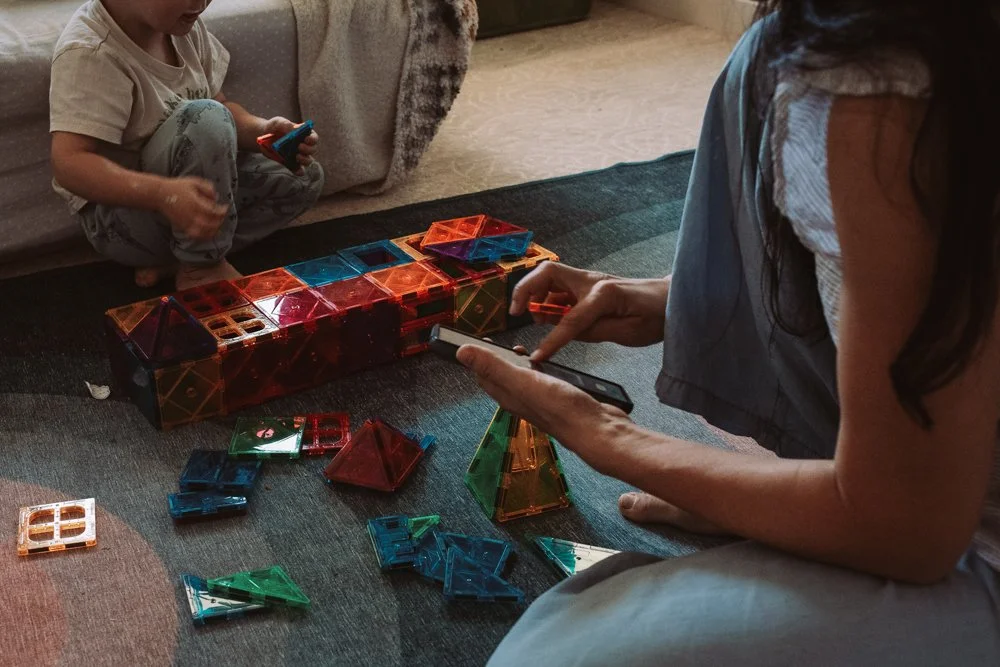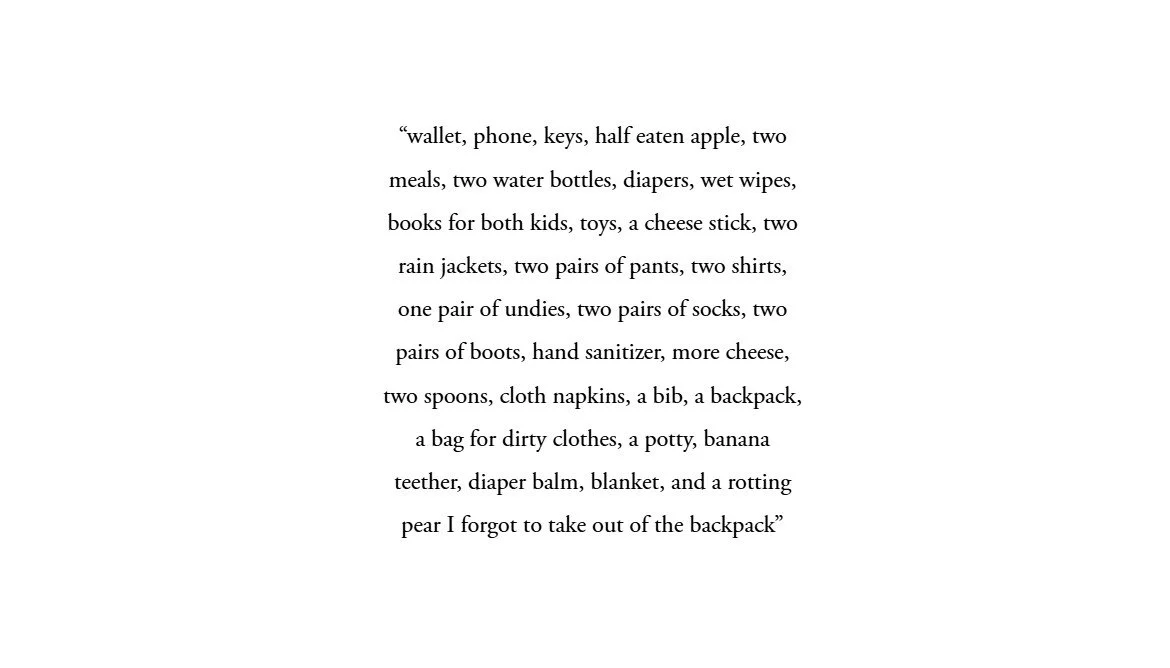About this photo project
I grew up in a web of support that involved relatives, neighbors, and friends who lived in physical proximity and shared life and resources. Growing up in a community was as normal and assumed to me as growing itself was.
Today, I live in a modern Western city, where a combination of individualistic culture, digital-era social shifts, and demands of mothering have left me feeling more isolated than ever. This experience I share with majority of mothers I come across. As I started paying more attention to this problem, I also noticed unique solutions to it. One of those is a group of friends who decided to live in a community - sharing backyards, meals, and a vision of a life in close community.
This project is an invitation to consider our own lives in relation to community and isolation; to ponder the decisions that brought us here, and reimagine choices that could lead us into creating our own villages.
Where is your village?
-

12 feet
Liz lives in an intentional community made up of seven closest family friends who are in close physical proximity. Of those, five share the backyard.
-

5580 miles
I live in a house with a big backyard and a tall privacy fence, an attached garage, and neighbors who share no more than a passing “hello”.
How do you reach your friends?
-

Everyone in the group moved from a different state with no family in town. They met through mutual connections and committed to meeting every Wednesday to deepen the friendship.
-

I moved across the globe to pursue higher education. Wherever I go - I thought - I am sure to find a new community in my environments.
What do you bring when you go to your best friend’s house?
-

Over the years, the friendships and desire to be in proximity grew. Initially, there were four couples who spent years actively looking for ways to live in community.
-

But as I was making good friends in my new city, our schedules and priorities kept shifting until it become hard to stay close. Today, my closest people can only be reached by a phone, or....
-

They set out to live within “baby monitor” distance. In 2015 they bought three houses that were being built in place of a demolished one. The rest of families joined the community over the years through a combination of co-housing, renting, and homeownership.
-

… a 40 min car drive. “We’ll still see each other,” we thought as we all prioritized proximity to work or better school districts or bigger yards over being close to each other.
What is on your dream house wish list?
Proximity to friends
Good school district
Old style house with hardwood floors
Big backyard
Desirable neighborhood
Lots of natural light
Space for family to visit
Wood burning fireplace
Attached garage
Proximity to friends or family
-

Every Tuesday, the families have dinner together, rotating hosts. Everybody brings their own bowls and either takes a portion to-go or eats together. The house was full of people eating and chatting, most not even close to the dining table. It felt like a true family get-together.
-

With both my husband and I living far from our homes of origin, breakfast with family, although a regular occurrence at our house, is only seldom in person. Multi-family dinners only happen for holidays.
A decade ago, an average American spent over six hours a week with friends.
Today, it’s less than two hours.
-

In addition to Tuesday night dinners, Liz still meets with the core four families every Wednesday, a years-long tradition. Saturday nights are moms-only and dads-only nights out. Liz has 28 planned hours with closest friends every month. She at least sees them in passing every single day.
-

Despite our best efforts to be each other's community, living far from our friends has made it hard to share lives in more meaningful and consistent ways. I see my closest friends every three weeks.
About 67% of Americans report that they lack the community support they need in order to thrive.
Health impact of isolation is equal to or greater than diabetes, obesity, or smoking 15 cigarettes a day.
-

On Wednesdays and Fridays, the backyard becomes an outdoor gym with an open invitation for any moms who want to join. The personal trainer, who is a part of the community, leads the group into interactive exercises where building relationships seems equally important as building the muscles.
-

My in-home physical therapist left a friendly reminder on the fridge to do my exercises - daily. Over a month later, I have yet to do a single rep.
-

Sharing resources is another important value of this unique friend group. When Liz needs something - be it baking powder, kids Tylenol, or a mixer, she just walks over to one of her best friend’s houses and takes it. They have access to each other's houses even when no one is home to open the door.
-

With no community nearby, I find myself Googling things like “how to make bread without yeast,” making late-night runs for Tylenol, or checking if Amazon Prime can deliver diapers at dawn. Consumerism is the antidote to community.
How do your kids meet with their village?
-

In a shared backyard, spontaneously?
-

On video calls and planned gatherings?
-

This pile of kids’ bikes and scooters serves as a stark visual reminder of a life lived together. I imagine that any time a child grabs a bike, they are reminded that their life, like their bike, is intertwined with their closest friends.
-

Our neighborhood only has a few kids, and even those are rarely outside. We enjoy our frequent family bike rides in the neighborhood and on this particular day, we also took a family member with us for a virtual tour.
-

As I observe this unique community, I realize that there is truly nothing radical about them. There is just a lot of intentionality and commitment to sharing lives. They are everyday people, living everyday lives, who stubbornly design togetherness into every corner of their space and every aspect of their lives.
-

In my life, too, I see stubborn devotion to my most precious relationships, my village. I see commitment to each other; commitment to staying on the call even when it keeps cutting out, to answering a text even when received a few minutes too early in the morning, to going on a 30 min car drive just to see friends for an hour.
I see the commitment, and now I also see an invitation.
This invitation isn’t to find a village…
but to make one.
Sources:
Our Epidemic of Loneliness and Isolation, Surgeon General Social Connection Advisory www.hhs.gov/sites/default/files/surgeon-general-social-connection-advisory.pdf. Accessed 18 Dec. 2024.
A big thank you to Liz Bohannon and the families of this community who allowed me to participate in and photograph their most personal and sacred moments together.
Sara Stanković Johnsović is a Serbian-American documentary photographer based in Portland, OR. She holds a BA in International Relations and an MBA. She is also a mom with a phone full of photos, yet very few of those actually show all the hard and fun and messy and beautiful ways she loves her children. This realization lead her to family documentary photography and capturing undirected, real life - full of magic and chaos.
Sara is passionate about sharing the stories that make us. See more of her work here.








